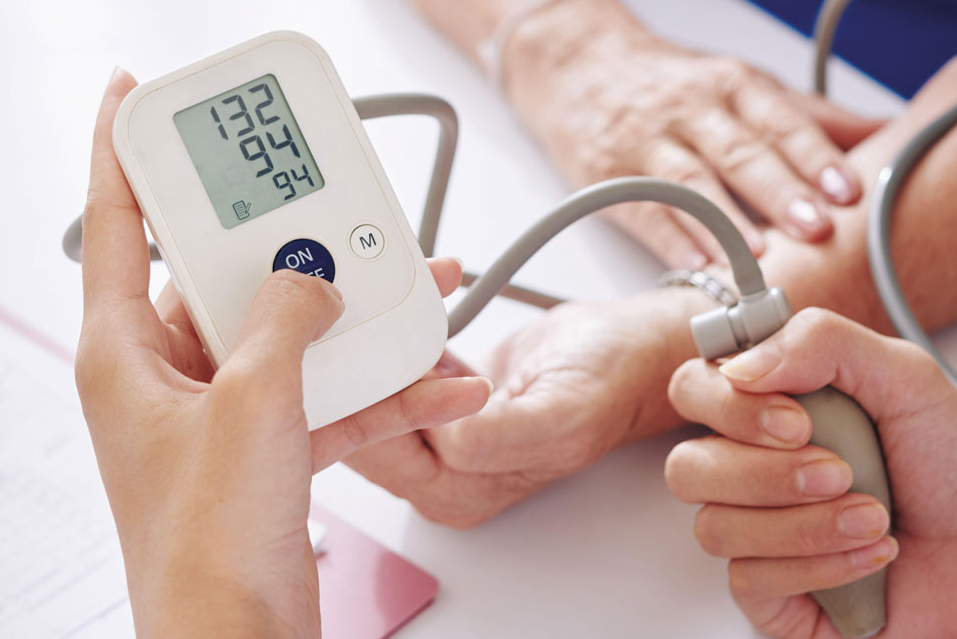Having your blood pressure measured is often a routine part of doctor’s visits and at-home health monitoring. But for some, the seemingly simple process throws a curveball: Why does my blood pressure monitor inflate twice? While disconcerting, a two-pump cycle isn’t necessarily a cause for alarm.
Let’s delve into the possible explanations and equip you with the knowledge to navigate this blood pressure monitor quirk with confidence.
Why Does My Blood Pressure Monitor Inflate Twice?
- Initial Pressure Assessment: The first inflation acts as a preliminary reading, providing the monitor with an estimate of your baseline pressure. This helps determine the appropriate pressure range for the final inflation and measurement.
- Oscillatory Detection: Blood pressure fluctuates with each heartbeat, creating pulsations in the inflated cuff. The second inflation, typically to a slightly higher pressure, allows the monitor to detect these oscillations more accurately. This information is crucial for calculating both systolic (peak) and diastolic (resting) pressure values.
- Irregular Heart Rhythm: If your heart rhythm is irregular (arrhythmia), the initial reading might be insufficient for a precise measurement. The second inflation provides additional data points to account for these irregularities and deliver a more reliable result.
- Improper Cuff Placement: An improperly positioned cuff can lead to inaccurate readings and trigger a second inflation attempt. Ensure the cuff is snug but not overly tight, centered on your bare upper arm, and at heart level.
- Monitor Malfunction: While less common, technical issues within the monitor itself can cause double inflation. If you suspect this might be the case, consult the device manual or contact the manufacturer for further guidance.

Image Credit: Verywell Health
Troubleshooting Tips for Double Inflation
- Relax and remain still: Movement can influence blood pressure readings. Sit comfortably with your back supported and avoid talking or fidgeting during the measurement.
- Double-check cuff placement: Ensure the cuff is positioned correctly as described above.
- Repeat the measurement: If the double inflation persists, take a brief rest and try again. Aim for two to three consecutive readings with at least a minute interval between them.
- Consult your doctor: If the double inflation happens consistently, or if you have concerns about your blood pressure, seek professional medical advice. Your doctor can assess the situation and determine if further investigation or adjustments to your monitoring routine are necessary.
When to Seek Medical Attention
While double inflation is usually not a cause for immediate concern, certain situations warrant a doctor’s visit:
- Dizziness, lightheadedness, or fainting: These symptoms can be associated with significant blood pressure fluctuations or underlying medical conditions.
- Chest pain or shortness of breath: These could be indicators of serious cardiovascular issues and require prompt medical evaluation.
- Unusually high or low blood pressure readings: Consistent readings outside the normal range, even without accompanying symptoms, necessitate medical attention.
- Concerns about your heart health: If you have a history of heart disease, arrhythmia, or other cardiovascular conditions, any irregularities in your blood pressure monitoring warrant consultation with your doctor.
Remember:
- Double inflation isn’t inherently worrisome, but it’s essential to understand the potential reasons and take appropriate action if necessary.
- Prioritize proper measurement techniques and address any concerns with your doctor promptly.
- Regularly monitoring your blood pressure, whether it inflates once or twice, plays a crucial role in maintaining your overall cardiovascular health.
Living a Healthy, Pressure-Wise Life
Beyond understanding the occasional double inflation, focus on adopting healthy lifestyle habits to keep your blood pressure in check:

- Maintain a balanced diet: Limit processed foods, saturated fats, and excessive sodium intake. Prioritize fruits, vegetables, whole grains, and lean protein sources.
- Engage in regular physical activity: Aim for at least 30 minutes of moderate-intensity exercise most days of the week.
- Manage stress effectively: Practice relaxation techniques like yoga, meditation, or deep breathing to combat stress, a major contributor to high blood pressure.
- Maintain a healthy weight: Excess weight can significantly impact blood pressure. Aim for a healthy weight range through diet and exercise.
- Limit alcohol and tobacco use: Both substances can elevate blood pressure. Moderation or complete abstinence is recommended for optimal cardiovascular health.
Conclusion
The next time your blood pressure monitor embarks on a two-pump tango, remember: knowledge is power. By understanding the potential reasons behind this phenomenon and taking appropriate action, you can ensure accurate monitoring and prioritize your cardiovascular health for a happy, healthy life.
Resources & References
- The American Heart Association: https://www.heart.org/
- The Mayo Clinic: https://www.mayoclinic.org/
- The National Institutes of Health: https://www.nih.gov/
FAQs – Blood Pressure Monitor Inflation
Is a double inflation on my blood pressure monitor always worrisome?
No, not necessarily. Double inflation is quite common and often serves a vital purpose: capturing more accurate readings, especially if your heart rhythm is irregular or the initial pressure assessment needs refinement. However, if it happens consistently or alongside other concerning symptoms like dizziness or chest pain, consulting your doctor is advisable.
What are the main reasons my monitor might inflate twice?
- Initial Pressure Assessment: The first inflation helps estimate your baseline pressure, setting the stage for a more accurate second inflation and measurement.
- Oscillatory Detection: The second inflation, slightly higher than the first, allows the monitor to detect the pulsations in your arm caused by your heartbeat, crucial for calculating both systolic and diastolic pressure accurately.
- Irregular Heart Rhythm: If your heart beats erratically, the initial reading might be insufficient. A second inflation provides more data points to compensate for these irregularities.
- Improper Cuff Placement: A loose or misaligned cuff can influence readings and trigger another inflation attempt. Ensure proper placement as described in the article.
What can I do to minimize double inflation on my monitor?
- Relax and remain still: Movement can affect readings. Sit comfortably, avoid talking, and stay calm during the measurement.
- Double-check cuff placement: Ensure the cuff is snug but not tight, centered on your bare upper arm, and at heart level.
- Repeat the measurement: If the double inflation persists, take a short break and try again. Aim for two to three consecutive readings with a minute interval between them.
When should I see a doctor about double inflation?
Consult your doctor if:
- Double inflation happens consistently, even with proper technique.
- You experience concerning symptoms like dizziness, lightheadedness, fainting, chest pain, or shortness of breath.
- Your blood pressure readings are consistently outside the normal range.
- You have a history of heart disease, arrhythmia, or other cardiovascular conditions.
Can malfunctioning monitors cause double inflation?
While less common, technical issues within the monitor itself can trigger double inflation. If you suspect this might be the case, consult the device manual or contact the manufacturer for further guidance.
What can I do to maintain healthy blood pressure beyond avoiding double inflation?
Focus on adopting healthy lifestyle habits:
- Balanced diet: Prioritize fruits, vegetables, whole grains, and lean protein, limiting processed foods, saturated fats, and excessive sodium.
- Regular exercise: Aim for at least 30 minutes of moderate-intensity activity most days of the week.
- Stress management: Practice relaxation techniques like yoga, meditation, or deep breathing.
- Healthy weight: Maintain a healthy weight range through diet and exercise.
- Limit alcohol and tobacco: Moderation or abstinence is recommended for optimal cardiovascular health.
Remember, double inflation isn’t always a cause for alarm, but understanding the reasons behind it and taking appropriate action can empower you to monitor your blood pressure accurately and prioritize your overall cardiovascular health.



